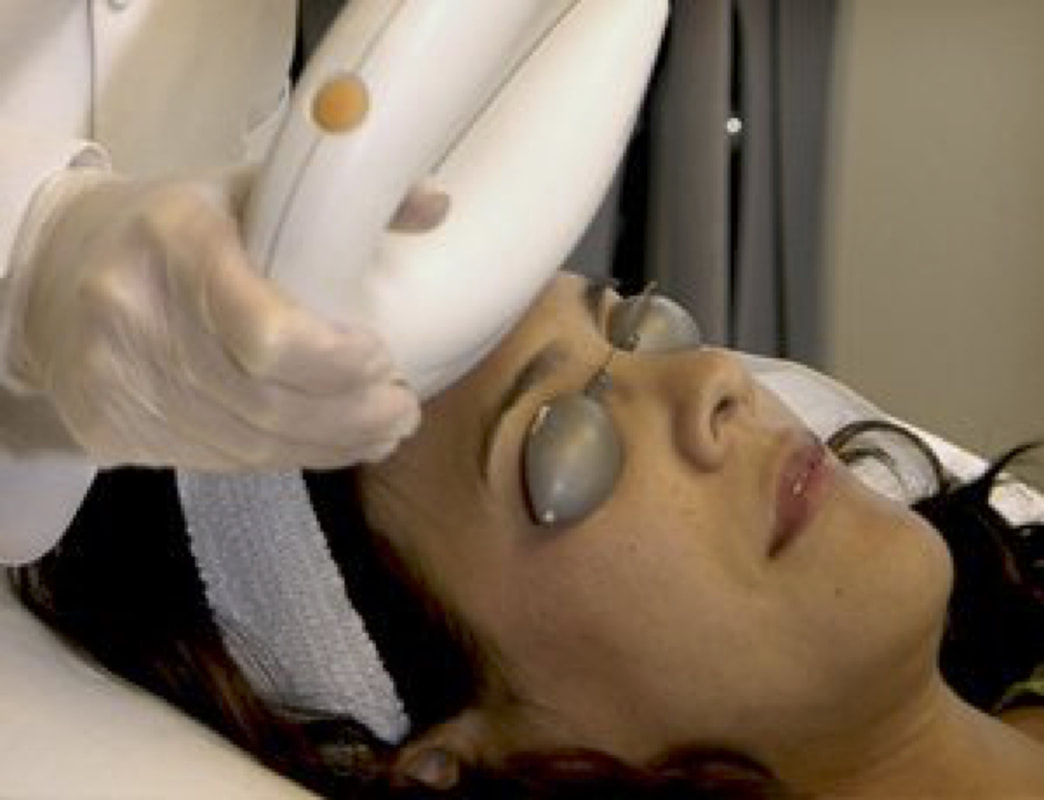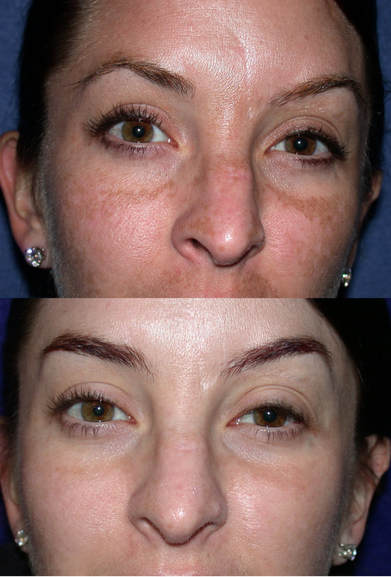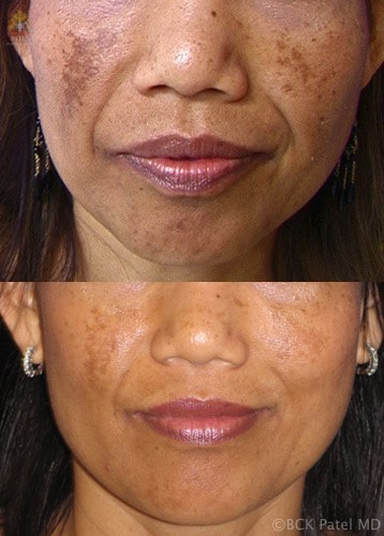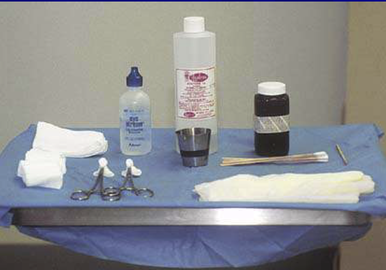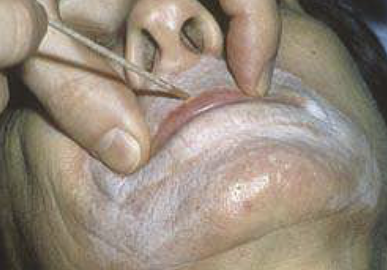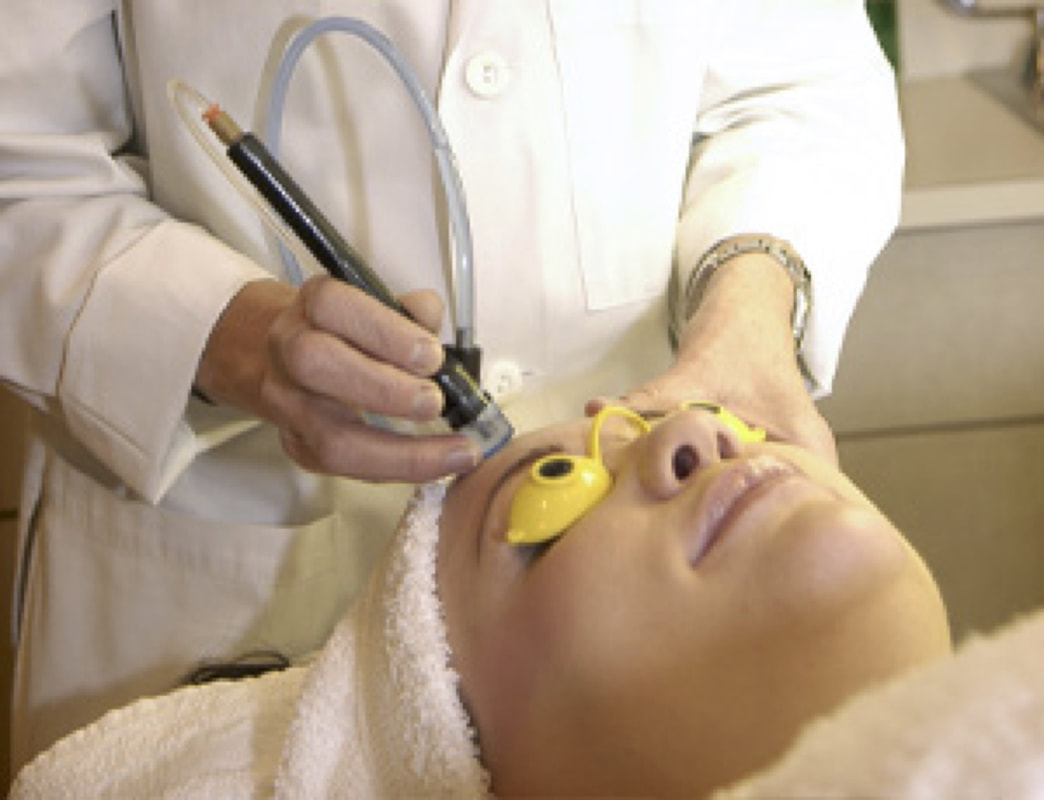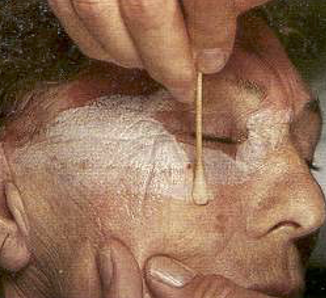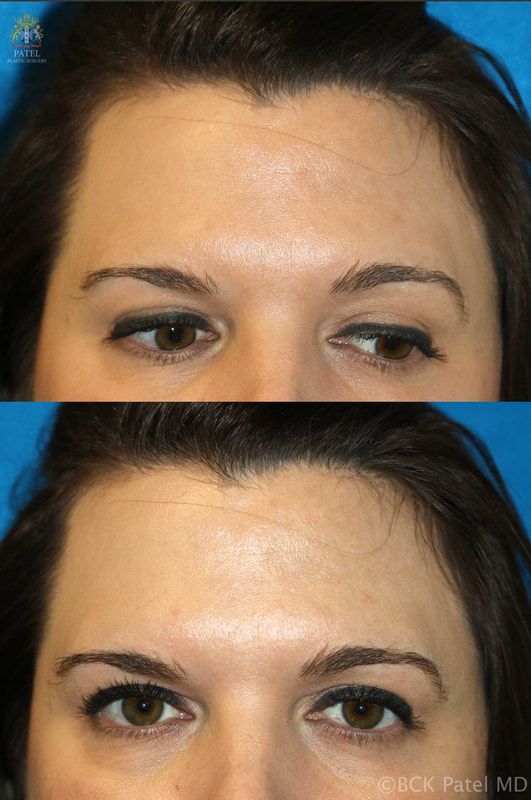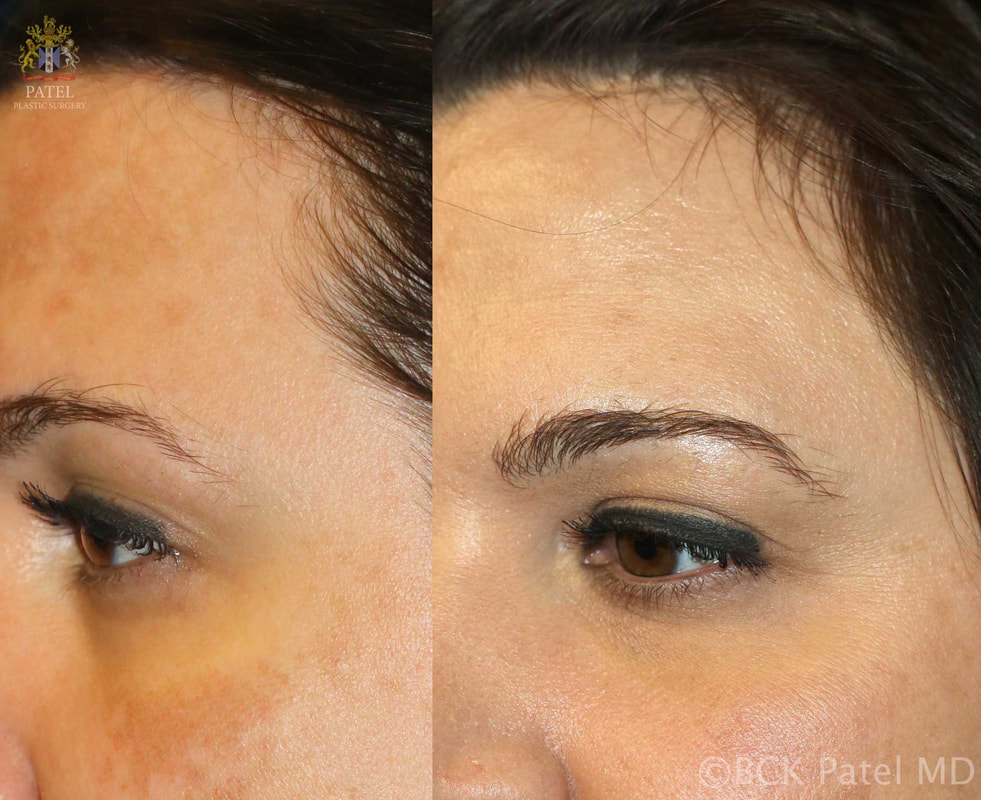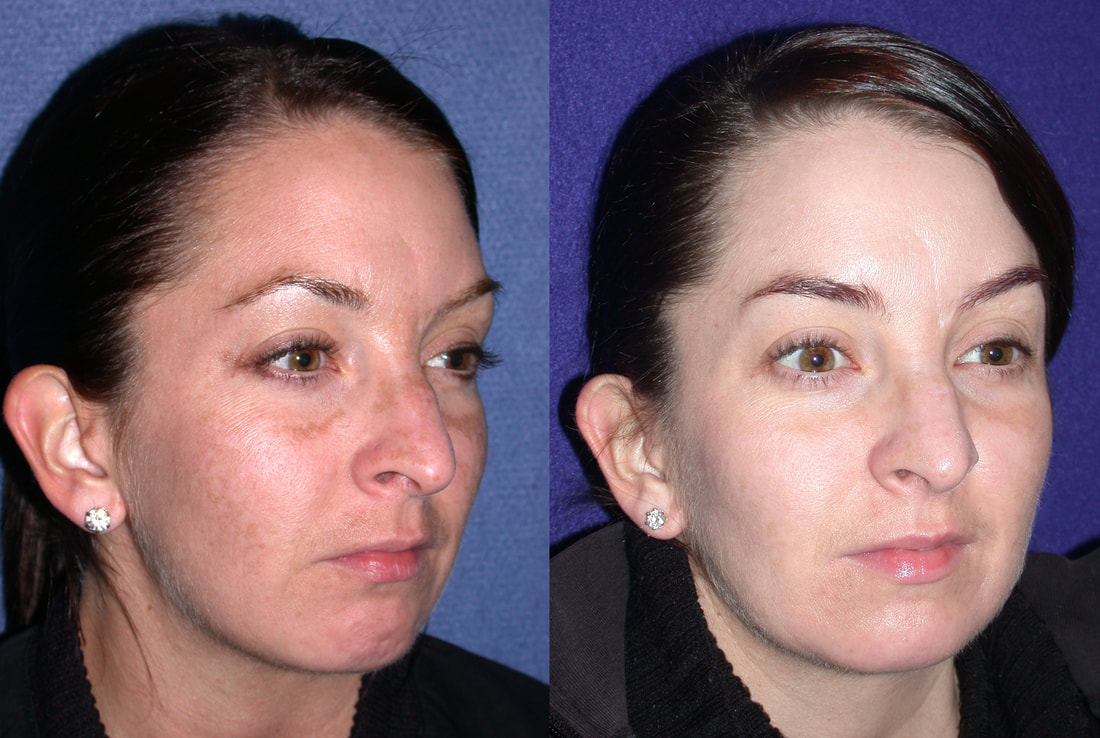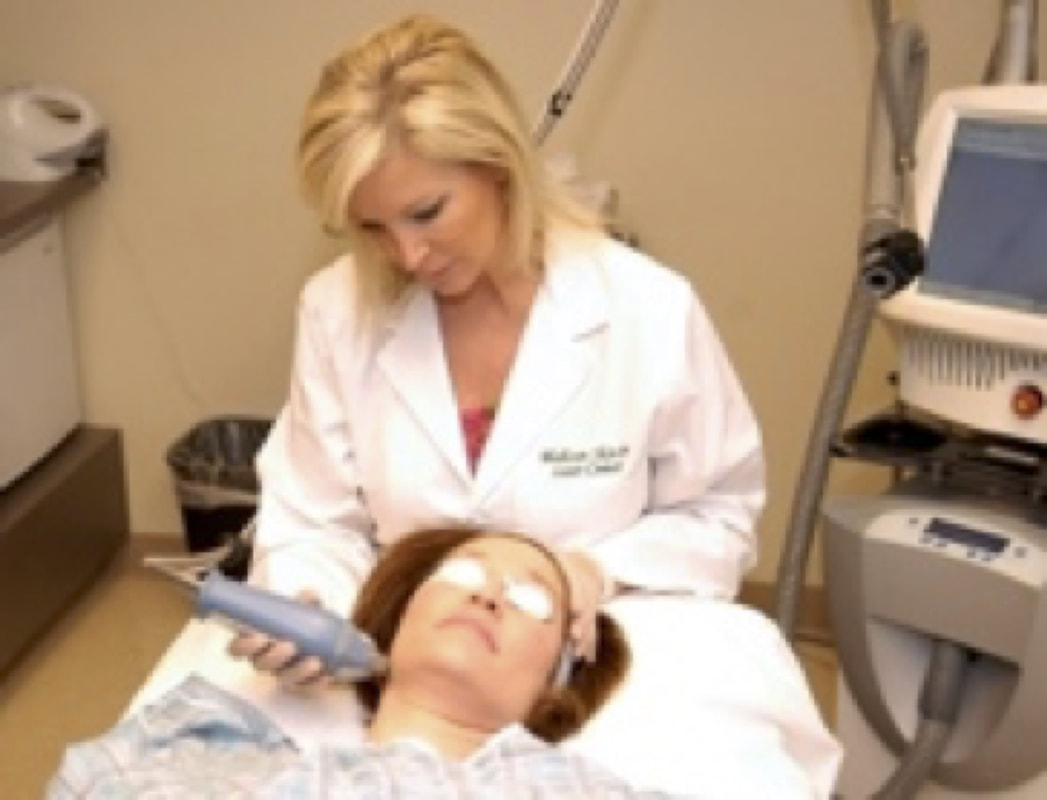|
Melasma is the brown “splotchiness” on the forehead, cheeks, upper lip, or jaw line that is triggered by hormones and light. Hormones stimulate the growth of cells that make brown pigment (melanocytes). Natural light stimulates the production of even more brown pigment (melanin). Estrogens in oral contraceptives and hormone replacement therapy can also do this. So, there are two problems: too many cells making brown pigment and light constantly stimulating them. |
Melasma: Basics of What to do…
- Use the best quality sunscreen every morning – think zinc and SPF 30 or higher;
- Wear a wide-brim hat;
- Try bleaching creams from your plastic surgeon – you’ll need a prescription to get the stronger ones;
- Get a series of microdermabrasion or light peels, which, if done correctly, can help reduce the discoloration;
- If you can, change contraception or decrease your estrogen dose;
- Consider a fractional laser series
What is Melasma?
Melasma shows up as brown spots or splotches on the forehead, cheeks, jaw line or upper lip. Melasma is essentially too much dark pigment. That pigment has been triggered by hormones and/or sun. Melasma can appear when a woman’s hormones change, whether through pregnancy, oral contraceptives, or hormone replacement therapy after menopause. Women of color are prone to melasma, and it is a significant problem for many. But people of any skin type can get melasma.
Once melasma has manifest itself, for example during a pregnancy, it may become very difficult to treat afterwards. Also, it tends to become worse with subsequent pregnancies, particularly if the pregnancy is during the summer. If you do get melasma during the pregnancy, chances are it will resolve after delivery. But in a small percentage of women it gets worse over time and with exposure to sunlight.
Once melasma has manifest itself, for example during a pregnancy, it may become very difficult to treat afterwards. Also, it tends to become worse with subsequent pregnancies, particularly if the pregnancy is during the summer. If you do get melasma during the pregnancy, chances are it will resolve after delivery. But in a small percentage of women it gets worse over time and with exposure to sunlight.
"Well, the last time I had a picture taken I could hardly see my eyes because of the weight of heavy eyelid. Then I paid attention to how I was actually using my eyes and I really noticed when I was looking at anything especially the computer I was straining my forehead to see better. Since I have had it done I no longer have to lift the forehead and tilt my head to see. It is amazing! I love..." D. Rock 63 Yrs Old with Fat Droopy Eyes - Salt Lake City, UT
Melasma with pregnancy
Melasma is frequently associated with pregnancy. Most of us know of friends, whether they got pregnant at age twenty-five or at age forty-one, who have darkening on their faces during pregnancy. If melasma starts during a pregnancy, chances are good it will resolve itself after delivery. It may recur with subsequent pregnancies, though, particularly if you are pregnant during the summer, when sunlight is more intense.
Melasma gets worse over time with exposure to sunlight. If you are pregnant, particularly in the summer, be sure to apply a SPF fifteen or greater with zinc, titanium, or mexoryl every single morning and reapply it frequently. You should also wear a hat.
Melasma gets worse over time with exposure to sunlight. If you are pregnant, particularly in the summer, be sure to apply a SPF fifteen or greater with zinc, titanium, or mexoryl every single morning and reapply it frequently. You should also wear a hat.
Melasma with oral contraceptives
This is less of a problem for women forty and over because fewer are on oral contraceptives. If you are taking oral contraceptives and begin to develop blotchy brown patches on your face, talk to your physician right away. The sooner the better. The longer you stay on the oral contraceptives, the greater the chance the melasma
will become a permanent problem.
will become a permanent problem.
Melasma with hormone-replacement
As we know from the press, hormone replacement therapy (HRT) can be a very complicated issue, and I won’t go into all the pros and cons. Individual and family health risks need to be considered when considering HRT. Suffice it to say that, if for health reasons you are on hormone replacement therapy, it may be possible to take the HRT in the evening (check with your doctor) instead of the morning, so that the peak levels occur at night. The creams and patches may be slightly more melasma-friendly than the oral versions. The oral versions are cleared in the liver and changed to compounds which may make you more melasma-prone. Take the lowest dose that you can.
If you get melasma from postmenopausal hormone replacement and can’t stop the HRT for health reasons, then use sunscreen or layer two sunscreens, stay out of the midday sun, keep your hat on, and talk to your us about prescription “bleaching” creams. All these simple measures will help to limit the blotchiness of melasma.
If you get melasma from postmenopausal hormone replacement and can’t stop the HRT for health reasons, then use sunscreen or layer two sunscreens, stay out of the midday sun, keep your hat on, and talk to your us about prescription “bleaching” creams. All these simple measures will help to limit the blotchiness of melasma.
Treating Melasma
The essential message is that Melasma is difficult to treat! However, with an appropriate (and gentle) approach, improvement can be achieved.
Primum non nocere: Sunscreen, sunscreen, sunscreen!
You will not have success treating melasma if you don’t block light. Every time ultraviolet light hits these brown spots it makes them worse. Your sunscreen must block UVA as well as UVB. See which sunscreens I have tried and highly recommend.
Double sunscreen
Especially the areas where you have the most blotches. Try using the ColoreScience Sunforgetable SPF 30 powder over a cream sunscreen or a mineral pigment sunscreening makeup like Jane Iredale over the sunscreen. Wear a hat to keep the light off those areas if you can.
Wear Sun Protective Clothing
If your melasma is bad, wear long-sleeved shirts and pants and wide-brimmed hats.
Stay out of the sun in the mid-day
Think of your skin as “porcelain!”
Nonprescription “bleaching” creams
These creams don’t really “bleach” anything. Instead, they block the production of excess pigment in the skin. The pigment-making cells are like little factories that churn out microscopic, brown granules. The bleaching creams partly shut down the factory so less brown pigment granules are made. However, as soon as you stop using the cream, the light can stimulate the cells again and the pigment production may gear up, causing the problem to recur. These work only if your problem is minimal. They all contain 2 percent hydroquinone and have been used for thirty years in various parts of the world.
Primum non nocere: Sunscreen, sunscreen, sunscreen!
You will not have success treating melasma if you don’t block light. Every time ultraviolet light hits these brown spots it makes them worse. Your sunscreen must block UVA as well as UVB. See which sunscreens I have tried and highly recommend.
Double sunscreen
Especially the areas where you have the most blotches. Try using the ColoreScience Sunforgetable SPF 30 powder over a cream sunscreen or a mineral pigment sunscreening makeup like Jane Iredale over the sunscreen. Wear a hat to keep the light off those areas if you can.
Wear Sun Protective Clothing
If your melasma is bad, wear long-sleeved shirts and pants and wide-brimmed hats.
Stay out of the sun in the mid-day
Think of your skin as “porcelain!”
Nonprescription “bleaching” creams
These creams don’t really “bleach” anything. Instead, they block the production of excess pigment in the skin. The pigment-making cells are like little factories that churn out microscopic, brown granules. The bleaching creams partly shut down the factory so less brown pigment granules are made. However, as soon as you stop using the cream, the light can stimulate the cells again and the pigment production may gear up, causing the problem to recur. These work only if your problem is minimal. They all contain 2 percent hydroquinone and have been used for thirty years in various parts of the world.
|
Prescription “bleaching” creams
There are a number of different prescription hydroquinone creams, most containing 4 percent hydroquinone (HQ4%) and other active ingredients. The best known ones are EpiQuin Micro, Tri-Luma Cream, Lustra (in various forms), and Solage. The brand names of 4% hydroquinone keep on changing so most prescriptions are written without a brand name. These creams tend to be expensive and sometimes insurance will not cover them. You might want to clarify with your insurance company ahead of time which creams are covered and which are not. There is also a generic, plain hydroquinone 4 percent, which is inexpensive. Although these generic brand work well, in some patients the generic brands may cause irritation. If you’re using a prescription hydroquinone-based cream and you’re getting worse, be sure to stop the cream and call your doctor. It shouldn’t sting or burn when applied. The European Union has taken all hydroquinones off their “safe” list. Don’t use them continuously over large areas or use the hydroquinone products for longer than three to six months without a physician’s approval. |
|
Plant-based “bleaching” creams
There are various plant-based compounds like arbutin, thymol, and kojic acid that inhibit pigment production, too. These are generally not as strong as the hydroquinones, but they may help if your problem is mild. Peels and microdermabrasion for melasma Both peels and microdermabrasion work by increasing cell turnover, which speeds the transit of that unwanted pigment out of your skin. They can be helpful for all types of brown spots regardless of their origin. Both of them also help to clear up acne if that’s part of your underlying pigment problem. Light peels in a series or deeper peels should be done with physician supervision. |
"I had a excellent eye lift done by Dr. Patel. He knows what he is doing and is very pleasant. Dr.Patel was easy to get an appointment and he works with you. The office staff was very pleasant and made you feel calm." D. Gull Highly recommended for eye lift surgery - Salt Lake City, UT
Microdermabrasion
|
Microdermabrasion is a method by which very fine crystals are vacuumed across the skin under pressure with a tiny vacuum-cleaner-like tip. The newer systems don’t use crystals but instead tiny diamond chips embedded in the tip to provide the abrasion. It’s nice to use the newer crystal-free system but not essential.
Also, the newer systems offer the ability to infuse therapeutic agents at the same time that the microdermabrasion is being performed. For example, an aesthetician can infuse a solution of salicylic acid, which helps to clean out the pores while the microdermabrasion is working. Microdermabrasion can cause complications if the microdermabrasion is too aggressive for your skin type. |
Depending on how much pigment you have and how sensitive your skin is, approximately five microdermabrasions are done two to four weeks apart, followed by a maintenance treatment about every four to eight weeks.
Light Chemical Peels
The best known of these are light glycolic peels. There are also peels that contain a beta-hydroxy acid like salicylic acid. These peels also take off a few layers of dead skin, help to clean out pores, and are used in a series.
These low-strength gentle acids are stroked onto previously cleansed skin and then left on for several minutes. The acid either self-neutralizes (the one we use called Vitalize peel) or is neutralized by the nurse or aesthetician performing the treatment. The skin will be slightly pink and feel tight for a few days, and then it will peel, either microscopically or like a mild sunburn.
With light acid peels, however, if the nurse or aesthetician isn’t experienced, sometimes the acid can be absorbed more in one spot than another and leave temporary irritation and a dark mark. Darker skin is more susceptible to this than lighter skin. Glycolic peels can also go deep enough that they can occasionally form a blister, but scarring is rare. When using these peels for melisma, experience with different skin types and with different peels is vital.
These low-strength gentle acids are stroked onto previously cleansed skin and then left on for several minutes. The acid either self-neutralizes (the one we use called Vitalize peel) or is neutralized by the nurse or aesthetician performing the treatment. The skin will be slightly pink and feel tight for a few days, and then it will peel, either microscopically or like a mild sunburn.
With light acid peels, however, if the nurse or aesthetician isn’t experienced, sometimes the acid can be absorbed more in one spot than another and leave temporary irritation and a dark mark. Darker skin is more susceptible to this than lighter skin. Glycolic peels can also go deep enough that they can occasionally form a blister, but scarring is rare. When using these peels for melisma, experience with different skin types and with different peels is vital.
Trichloroacetic acid (TCA) peels
|
We have a long experience with using TCA peels on the face. Indeed, when used appropriately and with proper prescription creams, these peels give superb results. TCA peels are excellent and safe in the hands of an experienced plastic surgeon. This is a good option, particularly if you have severe melasma.
One advantage of a TCA peel is that it can easily be done in your plastic surgeon’s office and doesn’t require anesthesiology or any intravenous anesthesia. Deep TCA peels, because of the risk of uneven absorption, blistering, and possible scarring, should only be performed by experienced plastic surgeons who have the requied knowledge of skin anatomy and physiology. |
The other disadvantage is that TCA peels can be mild to moderately uncomfortable. However, with some Tylenol or anti-inflammatories, the discomfort is usually minimal and lasts only five to ten minutes.
Lasers for Melasma
|
First of all, if you have melasma, or any darkening that is hormone related, don’t allow anyone but an expert to use lasers on your face. Many lasers will make melasma worse, not better, and it is important to go to an expert laser center if you’re considering laser treatments for melasma.
The laser system that has shown the best results with melasma over a wide range of skin types and colors is the fractional laser. The fractional lasers break the laser beam into smaller pixels that can provide a deeper and more effective treatment without the burning and downtime. |
Fractional lasers need to be repeated three to four times over about six months to give the most reliable results. But the data so far has been pretty good on fractional lasers to treat melasma.
Research in this area is very active, and there will be more fractional lasers hitting the market in the next year.
Research in this area is very active, and there will be more fractional lasers hitting the market in the next year.
Schedule Your Consult Today |
|
Visit Patel Plastic Surgery on YouTube for more free tips!
Stay Connected With Us On Social Media
|
Find UsLocations:
Dr. BCK Patel MD, FRCS 1025E 3300S Salt Lake City, Utah 84106, USA (801) 413-3599 (phone/text) E: [email protected] bckpatel.info Dr. BCK Patel MD, FRCS 585 E Riverside Dr Suite 201 Saint George, UT 84790 (435) 215-0014 E: [email protected] Quick-Link |
Let Us answer your questions |

